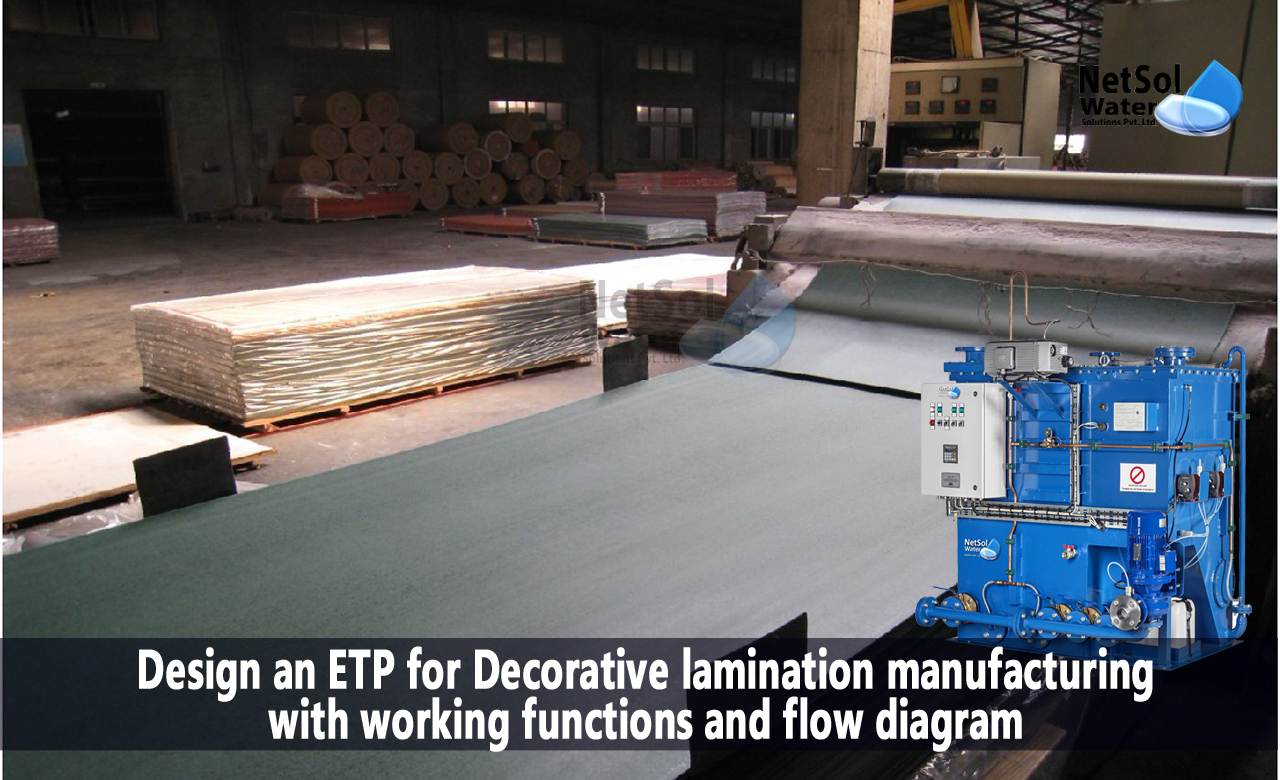Design an ETP for Decorative lamination manufacturing
Effluent treatment plants (ETPs) are designed to treat industrial wastewater before it is discharged into the environment. In this blog, we will discuss the design of an effluent treatment plant for a decorative lamination manufacturing industry.
Here in this blog, we will provide a process flow diagram and explain the working functions of each stage in detail.
Design Basis:
The design of the effluent treatment plant is based on the following parameters:
- Inlet flow rate: 10 m3/h
- Inlet COD: 5000 ppm
- Inlet BOD: 2000 ppm
- Inlet TSS: 1000 ppm
- Inlet pH: 7.5 - 8.5
- Inlet temperature: 30°C
- Discharge limit: COD - 250 ppm, BOD - 50 ppm, TSS - 30 ppm, pH - 6.5 - 8.5
Process Flow Diagram:
The effluent treatment plant for decorative lamination manufacturing industry consists of the following stages:

Working Functions:
- Equalization Tank: The equalization tank is designed to receive and store the wastewater from the manufacturing process. It helps in maintaining a consistent flow rate and pH. The equalization tank will have a volume of 20 m3 and a retention time of 2 hours.
- Chemical Treatment: The chemical treatment stage involves the addition of chemicals such as alum and polymer to the wastewater. These chemicals help in the removal of suspended solids and organic matter. The wastewater is then mixed in the flocculation tank.
- Flocculation Tank: The flocculation tank is designed to mix the wastewater with the chemicals added in the chemical treatment stage. The tank is equipped with a mixer to ensure proper mixing of the wastewater and chemicals.
- Sedimentation Tank: The sedimentation tank is designed to allow the solids to settle to the bottom of the tank. The clear water on top is then transferred to the filtration unit. The sedimentation tank will have a retention time of 2 hours.
- Filtration Unit: The filtration unit is designed to remove any remaining suspended solids and impurities from the wastewater. The unit consists of a sand filter and an activated carbon filter.
- Activated Sludge Process: The activated sludge process is designed to remove the organic matter from the wastewater. The wastewater is mixed with activated sludge in an aeration tank. The aeration tank is equipped with a blower to supply oxygen to the microorganisms.
- Secondary Sedimentation Tank: The secondary sedimentation tank is designed to allow the activated sludge to settle to the bottom of the tank. The clear water on top is then transferred to the tertiary treatment stage. The secondary sedimentation tank will have a retention time of 2 hours.
- Tertiary Treatment: The tertiary treatment stage involves the addition of chemicals such as chlorine and ozone to the wastewater. These chemicals help in the removal of any remaining impurities and microorganisms.
- Disinfection: The disinfection stage involves the use of ultraviolet (UV) radiation to disinfect the wastewater. The UV radiation kills any remaining microorganisms in the wastewater.
- Effluent Storage and Discharge: The treated effluent is stored in a storage tank before being discharged into the environment. The effluent will be discharged through a pipeline into the nearby river. The discharge will be monitored to ensure compliance with the discharge limit parameters.
Conclusion:
The design of an effluent treatment plant for decorative lamination manufacturing industry requires careful consideration of the inlet flow rate and quality, discharge limits, and the specific treatment processes required. The process flow diagram and working functions provided in this blog provide a comprehensive overview of the design of such a plant.
It is important to note that the design of an effluent treatment plant may vary depending on the specific requirements of the industry and the regulations in the area. Therefore, it is important to consult with a qualified professional and obtain the necessary permits before designing and constructing an effluent treatment plant.
You may reach us by phone at +91-9650608473 or by email at enquiry@netsolwater.com if you have any questions about our products, services, or support.



